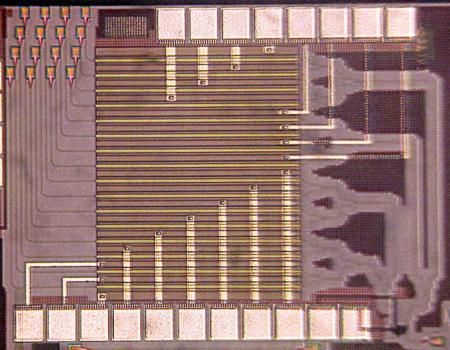Light-Bending Silicon Chip From Caltech Can Make Lens-Free Projector Of Your Smartphone
If you want to see all the mainstream smartphones featuring projectors, an engineering research team from CalTech might have a solution. A new silicon chip developed by Ali Hajimiri and his team from the Electrical Engineering department at the California University of Technology can make it possible for you to project the big presentations or videos right from your smartphone to the wall. Most projectors in use till date pass a beam of light through a tiny image and use lenses to map all the pixels in the small to larger pictures on big screens. The new "light-bending" chip from Caltech has an integrated optical phased array (OPA) to project the image electronically with only a single laser diode as light source and no mechanically moving parts.
Here's how it works - Phase shifters are employed to make the OPA chip change the speed of the light waves and thus the direction of the light beam. Electronic data from a computer are converted into multiple electrical currents - to form an image. The timed light waves are then delivered to tiny array elements within a grid on the chip. The light is then projected from each array in the grid, the individual array beams combining coherently in the air to form a single light beam and a spot on the screen. The rapidly steering electronic signal and the light acts as "a very fast pen" that draws an image made of light on the projection surface.
To explain the working, Hajmiri gives an example of 10 people kneeling in line by a swimming pool. If they slap the water at the exact same instant, they will make one big wave that travels directly away from them. But if the 10 separate slaps are triggered one after the other with a gap of half a second each, there will still be one big, combined wave, but with the wave bending to travel at an angle. That's how the light-bending silicon chip works.

Professor Ali Hajimiri and his team's success lies in making it all work on one-millimeter-square silicon chip. From the results that the researchers have got so far, the images projected on the screen are really simple ones - such as alphabets or a smiley face. However, they are working on larger chips that include more light-delivering array elements to improve the resolution and increase the complexity of the projected images (the same way bigger lenses do with traditional projectors). They are doing experiments with silicon right now which works better with infrared light. To project visible light, the compound semiconductor III-V technology can be used upon the same architecture.
Take a look at the following video that shows a triangle shape projected using Hajimiri's optical phased array chip. The image shown was projected in infrared light -
According to Hajimiri, if this silicon chip is integrated in a smartphone it can act as a projector all by itself. And that's not it. The chips opens a lot more possibilities and a wide range of applications. The researchers recently presented their work at the Optical Fiber Communication (OFC) conference in San Francisco. How do you like the idea of Projector in a smartphone? Share with us in comments below.
Source: #-Link-Snipped-#
Here's how it works - Phase shifters are employed to make the OPA chip change the speed of the light waves and thus the direction of the light beam. Electronic data from a computer are converted into multiple electrical currents - to form an image. The timed light waves are then delivered to tiny array elements within a grid on the chip. The light is then projected from each array in the grid, the individual array beams combining coherently in the air to form a single light beam and a spot on the screen. The rapidly steering electronic signal and the light acts as "a very fast pen" that draws an image made of light on the projection surface.
To explain the working, Hajmiri gives an example of 10 people kneeling in line by a swimming pool. If they slap the water at the exact same instant, they will make one big wave that travels directly away from them. But if the 10 separate slaps are triggered one after the other with a gap of half a second each, there will still be one big, combined wave, but with the wave bending to travel at an angle. That's how the light-bending silicon chip works.

Professor Ali Hajimiri and his team's success lies in making it all work on one-millimeter-square silicon chip. From the results that the researchers have got so far, the images projected on the screen are really simple ones - such as alphabets or a smiley face. However, they are working on larger chips that include more light-delivering array elements to improve the resolution and increase the complexity of the projected images (the same way bigger lenses do with traditional projectors). They are doing experiments with silicon right now which works better with infrared light. To project visible light, the compound semiconductor III-V technology can be used upon the same architecture.
Take a look at the following video that shows a triangle shape projected using Hajimiri's optical phased array chip. The image shown was projected in infrared light -
According to Hajimiri, if this silicon chip is integrated in a smartphone it can act as a projector all by itself. And that's not it. The chips opens a lot more possibilities and a wide range of applications. The researchers recently presented their work at the Optical Fiber Communication (OFC) conference in San Francisco. How do you like the idea of Projector in a smartphone? Share with us in comments below.
Source: #-Link-Snipped-#
0
